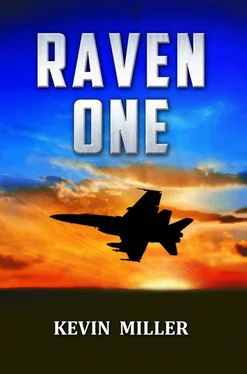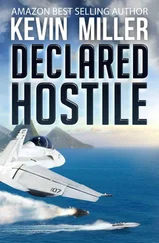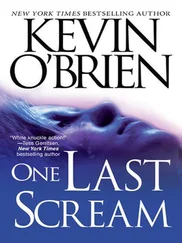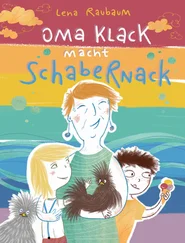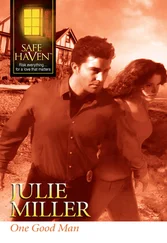Cajun caught himself before he went too far. For a moment he looked for something nearby to throw, but then he slumped in his chair and looked away, face red and muscles taut. During their years together, Wilson had had several opportunities to observe Cajun’s volcanic temper, and he now watched as Cajun struggled to keep it in check.
After a few moments Saint spoke. “Will that be all, sir?”
Cajun lifted his head and folded his hands in his lap, eyes again burning into Saint. “ Yes, ” he answered. Saint left without making eye contact, closing the door behind him.
The two pilots listened to Saint’s footsteps recede down the passageway. “Sorry you had to see that,” Cajun said, closing his eyes and rubbing his temple.
“It’s okay, sir.”
Cajun looked up at Wilson. “Tell Psycho — and Smoke — I need them to get their minds right and I need them to fly. We are in combat. I’ll contact Doc Laskopf and ask him to give us 48 hours. He’ll work with us. And if those two can’t get their minds right, then I need to know ASAP. No more secrets.”
“Yes, sir,” Wilson replied. He noticed a single gray hair in Cajun’s moustache.
“Tell her I’ll talk to her tonight, after the flag brief.”
“Yes, sir. How about you , Skipper?”
“I’m fine. Just give me 10 minutes, Flip. I’ll meet you in CVIC,” Cajun added.
“Take 20, sir. We’ve got well over an hour before we give CAG our game plan, and it’s pretty much set already.”
“Roger that. Thanks,” Cajun answered, his weary fingers again rubbing his temple.
While the world nervously watched the Strait of Hormuz and wondered if the United States was going to send a nuclear missile into Tehran, Cajun looked at his watch. “Okay, time to go.”
He then stood to leave and gathered up all the pages and put them in his strike planning folder while Wilson rolled up the chart of Bandar Abbas. Wilson followed him out of CVIC, where the bright fluorescent lights illuminated the activity of dozens of aviators in various stages of strike planning for their assigned targets. Admiral Smith and his staff expected Cajun and CAG Swoboda to brief them in 10 minutes. The so-called “lap-brief” would consist of big-picture items — such as strike composition, other assets assigned, and enemy order of battle — interspersed with myriad details concerning timing, tanking, target area tactics, and of critical importance, the aimpoints for the strike aircraft. CAG had approved Cajun’s thumbnail sketch of the plan earlier, which had allowed Cajun and his team to refine the plan and add detail for this brief with the strike group commander.
Cajun and his team had been assigned several aimpoints and a time on target from NAVCENT, with recommended weapons load outs and available intelligence and support assets at his disposal. However, the strike leader had the responsibility to orchestrate the plan and to obtain flag-level validation prior to execution. Cajun left CVIC confident of the plan his team worked on all day. Soon after turning right on the starboard passageway, he and Wilson entered the blue tile area and arrived at CAG’s stateroom door. Cajun knocked twice.
“Come in,” CAG said from inside.
Cajun opened the door and saw CAG and DCAG sitting at the table. “Ready to go sir?” Cajun asked.
“Yep, let’s do it,” CAG replied. Both of the seated officers rose to lead the way to the flag briefing spaces, eight frames aft. As the junior in the group, Wilson brought up the rear. In this meeting he would remain silent, but he would watch the proceedings carefully and take detailed notes of any of the admiral’s concerns.
CAG led them to the conference table in the empty briefing room. The admiral’s chair was at the head of the table, and Cajun staked out a position to its right, with Wilson next to him. CAG and DCAG sat down as their mirror images on the other side of the table.
Soon Captain Swartzmann entered wearing his blue, pullover sweater and carrying his ubiquitous notebook and coffee cup. He was followed by the Air Ops officer in a green flight jacket and another sweatered surface warrior. CAG Swoboda greeted Swartzmann with a cordial “Gene.” The chief of staff made a face but otherwise ignored him, and Wilson saw that CAG’s informal greeting got under Swartzmann’s skin. He, no doubt, preferred the formal Captain Swartzmann to his given name. Wilson suppressed a grin. Even the heavies found ways to bug each other.
Moments later the admiral arrived wearing his flight jacket and also carrying a cup of coffee. The room came to attention and Smith responded, “Seats. Seats, please.” Placing his coffee on the table, he surveyed the room and nodded at each of his air wing guests, greeting them by name and with a smile. “All right, Skipper, you are the first out of the block. What’cha got here?”
“Package 1A, sir, Bandar Abbas,” Cajun answered.
“Yeah, yeah… okay, go ahead,” Smith said, focused on the imagery slide Cajun placed in front of him.
Cajun began:
“Sir, this package is going after several aimpoints in and around the naval base at Bandar Abbas to interdict Pasdaran and Iranian Navy ability to harass shipping in Hormuz. As a premier naval base, you can see it’s heavily defended — with long range SAMs here, here, and here and with tactical weapons in and around the harbor areas. These islands in the strait are inhabited with triple-A of all calibers, and we can expect MANPADS everywhere. Bandar Abbas is also a fighter base, and we’ve imaged Phantoms, Tomcats , and MiG’s at the airfield. If they come up tomorrow night, we have a dedicated sweep to deal with them. And the strikers will be loaded out to deal with any leakers.”
“ Phantoms and Tomcats ,” Smith grumbled, shaking his head at the irony his pilots would have to face American-built aircraft.
Cajun described the aimpoints, the weapons load out and the delivery profile for the strike aircraft. Each of the senior officers leaned in to capture his every word and ensure their understanding — and Cajun’s complete mastery — of the reason for this strike. Because errant bombs were unacceptable, the strikers needed to be 100 per cent certain of their aimpoints and release parameters.
Smith looked at the satellite imagery, puzzled. “What are these?” he asked.
Cajun looked at the aimpoint. “ Boghammars in a nest, sir.”
“Then what are these ?” Smith added.
“Dhows, sir, also in a nest.” Cajun saw where the admiral was going.
“Well, they look a lot like boghammars to me.”
“Yes, sir, but the dhows are larger and pretty much uniform. Boghammars are smaller and have irregular shapes, as you can see.”
“Yeah, I can. But tomorrow night, will one of your tired and stressed JOs, or even you, be able to positively ID it on a targeting FLIR before you release? We can’t have the bastards on CNN beat us over the head because we blew some fishing boats out of the water.”
Wilson noticed that Swartzmann gave Cajun a sanctimonious look, and CAG did not appear to want to help in this situation. Wilson’s CO was on his own.
Cajun frowned at the imagery photo and looked up at Smith. “Sir, I can’t guarantee you the strikers, or even myself, can discern a dhow or a boghammar in every instance, but we can put a bomb in the middle of any nest along that wharf. The target is boghammars, but if a dhow is in among them, then they picked the wrong night to go alongside. They used dhows in the Richard Best operation.”
“That’s another question,” Smith added. “What if there’s nothing there? How old is this imagery? Hell, it doesn’t matter. It could have been taken today, and it wouldn’t matter. The Revolutionary Guard can move these boats in hours… less.”
Читать дальше
